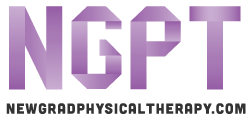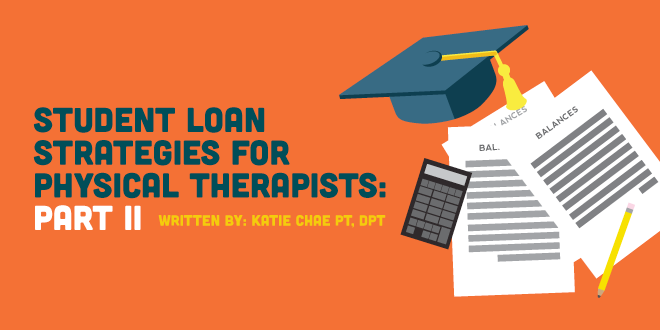|
Loan Amount
|
Servicer |
Rate
|
Other considerations
|
||
|
$80,000
|
Federal
|
6.8%
|
eligible for federal repayment programs | ||
|
$20,000
|
Discover
|
12%
|
not eligible for federal programs |
Federal loans:
- Graduate school loans are typically unsubsidized, which means that the borrower pays all of the interest charges.
- You may still have subsidized loans from undergraduate education. These loans are slightly better, because the government pays the interest on the loans while you are still in school or during some authorized deferment periods.
- Federal loans are often eligible for various loan forgiveness programs, including Public Service Loan Forgiveness (PSLF).
- These loans offer benefits, such as eligibility for deferment, forbearance, and other loan repayment options, based on life circumstances and income levels.
- Typically, these loans are offered at a fixed interest rate. 6.8% is a common rate for graduate student loans, but yours may be different. Make sure to check your statements!
Private loans:
- Terms and interest rates will vary significantly on these loans from lender to lender. These loans often have higher interest rates than federal loans.
- Typically, private loans are not eligible for PSLF and other federal forgiveness programs.
Credit card debt:
- This type of debt is usually at a high interest rate, often up to 20%. If possible, it is best to avoid putting living expenses on a credit card, as the costs will accrue quite rapidly.
- Some people may accrue consumer debt via personal loans or credit cards while in school to pay for living expenses. While this is not technically a student loan, it is vital to consider all debt you possess as you make your repayment strategy.
Other loans:
- Do you have loans from friends or family, car loans, mortgages, personal loans, HELOCs? This is a good time to account for all of your debt obligations as you make a solid plan.
Repayment options for physical therapy student loans
- Standard repayment term: For federal loans, the standard repayment term is up to 10 years, with a fixed payment per month.
- Extended repayment terms: There are terms offered with 25 year repayment, if that is what you need in your situation. Keep in mind that you will pay more in interest over time.
- Income Driven Repayment. For these options, you will pay about 10-15% of your “discretionary income” every month toward your loans. Discretionary income is calculated as the amount of your adjusted gross income (AGI) above 150% of the poverty level for your specific household size. There are several options as noted in the screenshots below, including Income Based Repayment (IBR), Pay As You Earn (PAYE), and Revised Pay As You Earn (REPAYE).
Quick definition stop: Adjusted Gross Income is your gross income after deductions like pre-tax retirement savings and healthcare premiums have been subtracted. For this reason, it can make sense to maximize pre-tax retirement savings as much as you can if you are using an IBR plan.
Let’s look at the sample scenario listed above with a variety of repayment options using the federal student loan estimator:
With these standard plans, obviously the Standard repayment option will cost the least over the lifetime of repaying the loan. But the monthly payment is also the highest, and could be tight on a starting PT salary.
What about Income Driven Plans?
These plans can obviously lower your monthly payments significantly, but increase the overall amount paid over the life of the loan. With the income driven plans, the remaining balance after 20 or 25 years of payments will be forgiven, which is great news, right? In many situations, yes! But keep in mind that the amount forgiven will be typically be taxable as income, which can result in a large tax bill. If you choose this plan, it is advisable to save for the resulting taxes starting now!
Forgiveness program for physical therapy student loans
After looking at the numbers, do the standard or income driven repayment options seem out of reach? Make sure you consider the available loan forgiveness options for physical therapists!
Public Service Loan Forgiveness is probably the most commonly used program by PTs. With this program, working for 10 years for any qualifying employer and making 120 payments toward your loans can qualify you for forgiveness of the remaining loan balance! Government employers, such as the VA, count toward this requirement, as well as any non profit 501(c)(3) organizations. Many hospitals have 501(c)(3) status, which means that there are many jobs available for PTs that would qualify!
- Unlike loan forgiveness that occurs after 25 years with other income driven programs, PSLF is not taxable!
- If you choose PSLF, remember that only Direct Federal Loans qualify. You can consolidate your other types of federal loans to a Direct Consolidation Loan, but make sure that you read all of the considerations for your situation. Private loans are not eligible.
- If using PSLF, an income based repayment program is likely to be the most beneficial for you, as it will lead to the highest amount forgiven after 10 years.
- To lower your payment amount, consider strategies to lower your AGI, such as contributing to a HSA account or 403 (b) retirement savings account that may be available through your employer.
- Of course, going this route may limit your income, as you may be able to make more money at a private employer than a non profit. This is another situation where it is important to run the numbers for your situation!
- Going this route also requires some faith in the system, and that the government will not change the forgiveness options prior to the 10 year forgiveness date.
Opportunities in the VA System: These options may or may not be available, so inquire about them when applying for a job.
- Education Debt Reduction Plan: this program offers debt payments up to $24,000 per year, up to $120,000 total over 5 years, for direct patient care providers in positions that are deemed “hard to fill.”
- VA Student Loan Repayment Program: Offers up to $60,000 total ($10,000 per year) toward loan repayment for providers in select occupations.
The APTA has a good list of other forgiveness opportunities that may be available, including opportunities working in the Indian Health Service, National Institutes of Health (research positions), or the Faculty Loan Repayment Program.
Certain private employers also offer forgiveness opportunities. For example, Health South, which owns a large network of inpatient rehabilitation hospitals, home health facilities, and outpatient clinics, offers up to $10,000 in loan forgiveness in exchange for a two year work commitment. As you look for jobs in your area, make sure to inquire about any available opportunities!
What about private loans?
The forgiveness and repayment opportunities discussed above work well if you have primarily federal loans! But many PT students turn to private loans for some of the financing for school. These loans can have widely varying rates and terms, so make sure to look up your specific loan details. The best option for dealing with these loans, along with credit card debt, is typically to make extra payments toward the debt with the highest interest rate first. Another option is to refinance to a lower interest rate.
Refinancing
With private student loan rates that are often higher than federal student loan rates, interest can add up quickly! It may make sense to consider refinancing your loans if you have a good credit score and good income, as even a few percentage points can make a big difference. For example, in our example above, with $80,000 at 6.8% interest and and $20,000 at 12% interest, refinancing the whole sum to a 4% fixed rate could save a significant amount, as shown by this analysis from FitBUX:
In this case, refinancing but continuing to pay the same monthly payment could save $127,000 and cut the repayment time almost in half! If you have decided not to pursue a forgiveness program like PSLF, refinancing might make a lot of sense.
A Note About Student Loans
On average, physical therapists have over $80,000 in student loan debt.
With that number being so massive we decided to take action for NGPT readers to help them out. We did a ton of research and found a company that we felt was the best one in the market… That company is SoFi and they are so awesome, even the New Grad Media team has used them to refinance student loans. The company has actually funded over $5 billion in loans to date and were just voted #25 on CNBC’s 2015 Disruptor List.
So if you are thinking of refinancing your student loans check out SoFi. We arranged with them an awesome deal that gives NGPT Readers a $200 bonus when they use our SoFi affiliate link.
Good luck and contact us if you have any more questions about using SoFi.
–The NewGradPhysicalTherapy.com Team
Your refinance rate will in large part depend on your credit score and income. So make sure that you are keeping track of your score to get the best rates!
Options to increase funds for debt repayment
- Work per diem at an additional job on the weekend or evenings. As physical therapists, we have the advantage of being able to easily pick up extra hours at a high hourly rate! A few weekend days now could mean more financial freedom later!
- Choose a higher paying job if necessary. Again, weigh the potential benefits of the jobs available to you–which ones make you eligible for PSLF vs offering a higher wage?
Spend Less:
- Use a budget to track all of your income and expenses. I personally use and love YNAB! By tracking your expenses, you may find areas that you can cut without sacrificing your quality of life.
- Cutting out coffee and lunches out can definitely make a difference, but consider the big ticket items like housing and car choices. Forgoing a new car purchase for a little while longer, or buying a simple used sedan rather than a brand new SUV could make a big difference in loan repayment if you redirect those funds to the loans!
Remember to check out my Ultimate Guide to Personal Finance for more strategies to build a solid financial foundation while pursuing your dream career as a physical therapist!
 NewGradPhysicalTherapy.com The Largest Online Resource For New Grad Physical Therapists
NewGradPhysicalTherapy.com The Largest Online Resource For New Grad Physical Therapists











